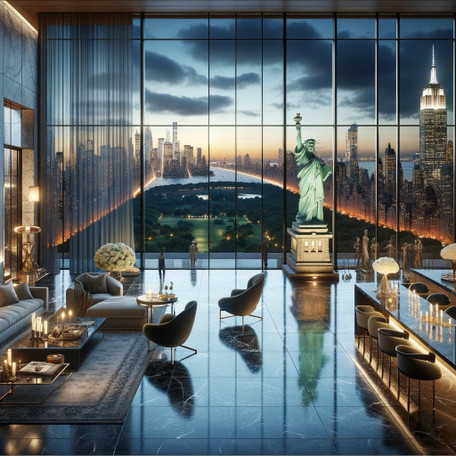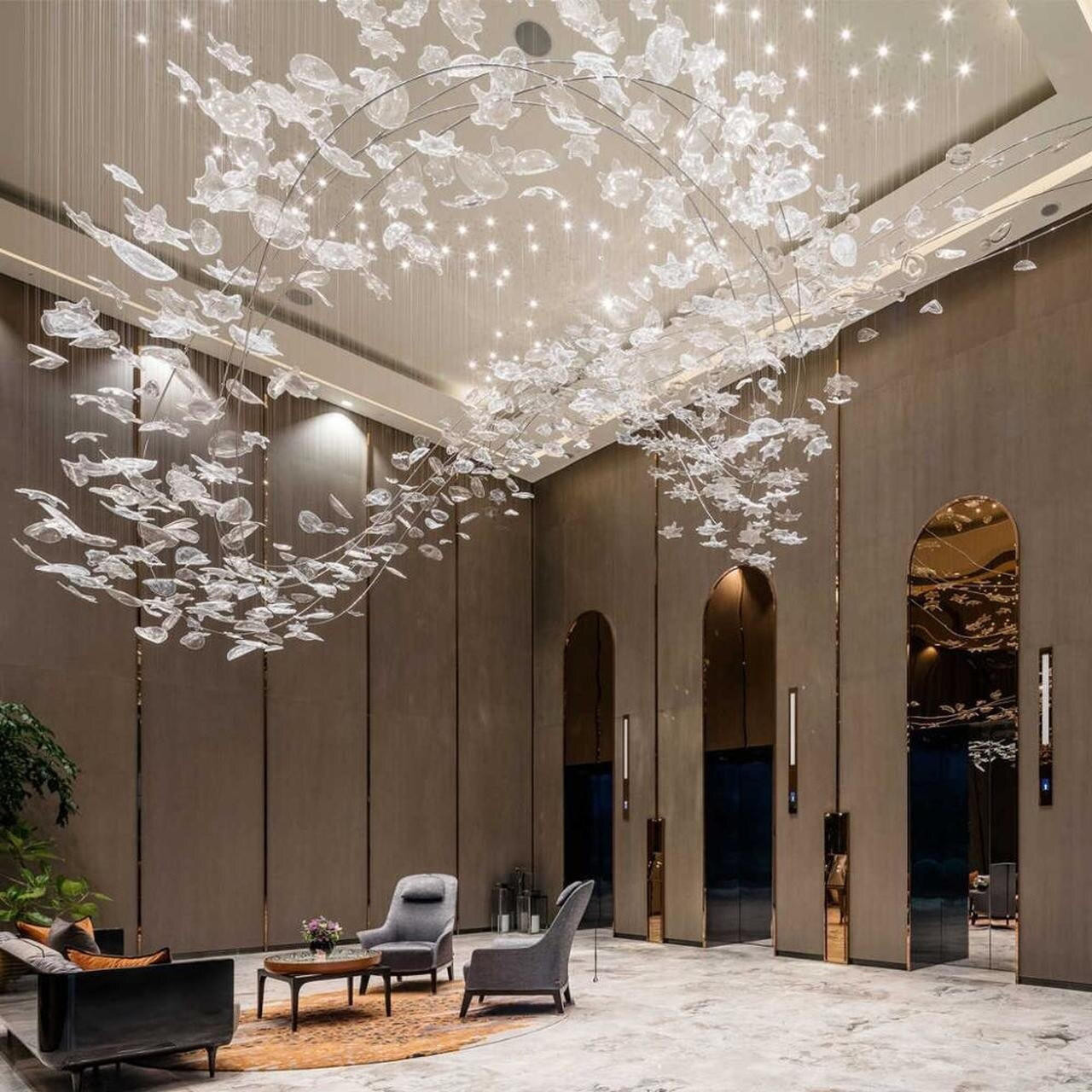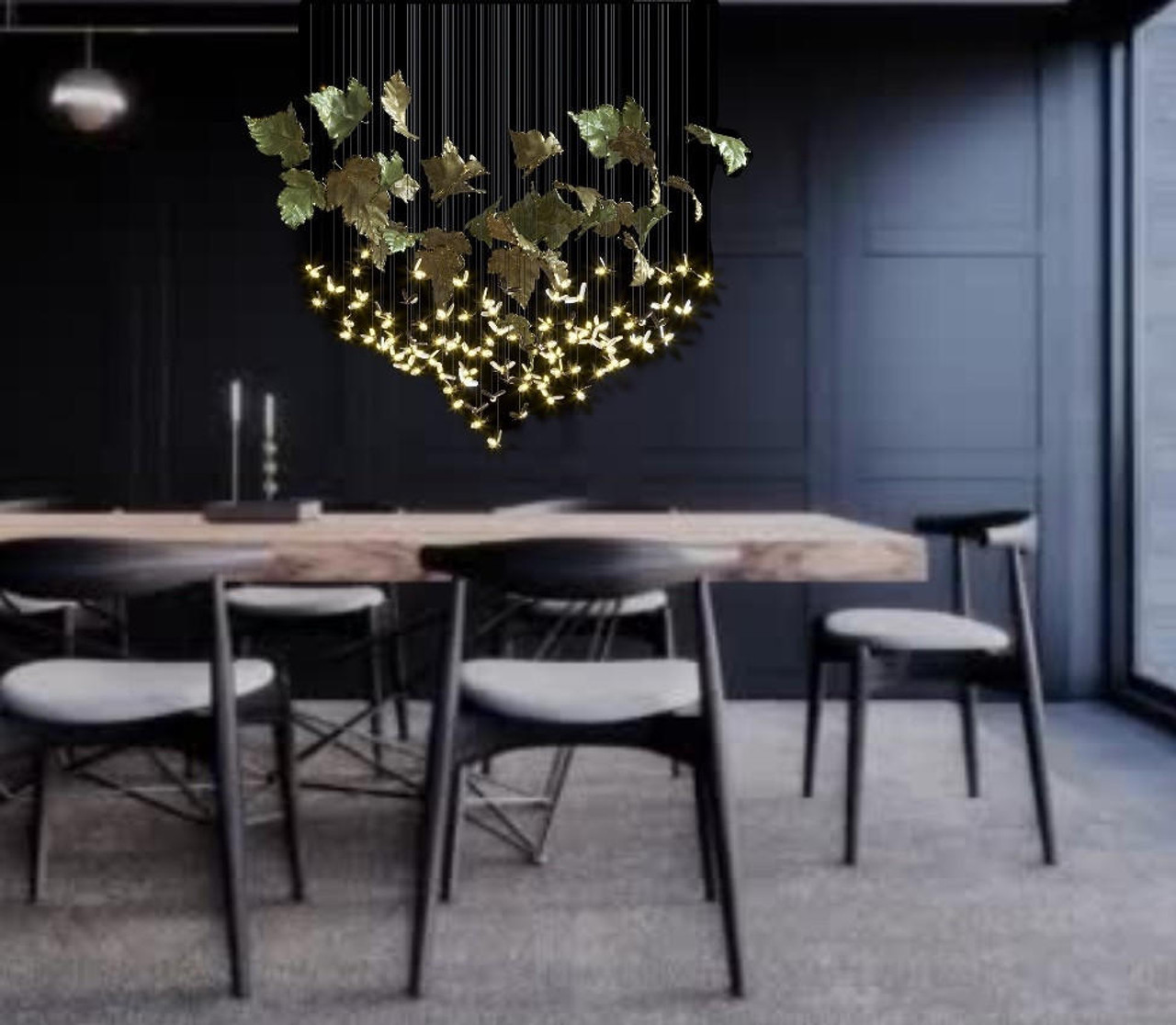Most Expensive Area In New York City - Most Expensive Place To Live In New York City
9th Aug 2024
Most Expensive Area in New York City: Most Expensive Place to Live in New York City
New York City is synonymous with luxury, opulence, and some of the most sought-after real estate in the world. From the towering skyscrapers of Manhattan to the historic brownstones of Brooklyn, the city's real estate market is diverse, yet consistently expensive. Within this vast metropolis, certain neighborhoods stand out as the epitome of affluence and exclusivity. In this blog, we’ll explore the most expensive areas in New York City, delve into some of the most luxurious properties, and highlight notable architectural projects that have transformed the city's skyline.
1. Billionaires' Row - Midtown Manhattan
When discussing the most expensive areas in New York City, Billionaires' Row inevitably takes center stage. This stretch of ultra-luxury skyscrapers along 57th Street in Midtown Manhattan is home to some of the most expensive residential real estate in the world.
Notable Properties:
- Central Park Tower: Standing at a staggering 1,550 feet, Central Park Tower is not only the tallest residential building in the world but also one of the most luxurious. Apartments in this tower start at several million dollars, with the most expensive penthouse reportedly asking for over $250 million. The building offers unparalleled views of Central Park, state-of-the-art amenities including a private club, and lavish interiors designed by Rottet Studio.
- 432 Park Avenue: Another jewel of Billionaires' Row, 432 Park Avenue is famous for its minimalist design by Rafael Viñoly. This 1,396-foot tower has been home to some of the most expensive real estate transactions in New York. The apartments feature 10-foot by 10-foot windows, offering stunning panoramic views of the city. The building includes amenities like a private restaurant, a screening room, and a health club.
Architectural Significance: Billionaires' Row is a testament to modern architectural ambition. The slenderness and height of these towers are feats of engineering, pushing the boundaries of what’s possible in urban construction. The area has sparked debates about the changing face of New York City, with critics concerned about the shadows these skyscrapers cast over Central Park and their impact on the city's skyline.
2. Tribeca
Tribeca, short for "Triangle Below Canal Street," has transformed from an industrial district into one of the most expensive and desirable neighborhoods in New York City. Known for its cobblestone streets, historic loft buildings, and celebrity residents, Tribeca offers a blend of old-world charm and modern luxury.
Notable Properties:
- 70 Vestry Street: This limestone-clad building is a favorite among celebrities, offering waterfront views of the Hudson River. Designed by Robert A.M. Stern Architects, 70 Vestry boasts an array of luxury amenities, including a swimming pool, a library, and a private porte-cochère. Apartments in this building can reach prices upwards of $40 million.
- 443 Greenwich Street: A former bookbinding factory turned luxury condo, 443 Greenwich is another Tribeca landmark known for its privacy and exclusivity. The building has attracted a slew of A-list celebrities, partly due to its "paparazzi-proof" underground garage. The building features expansive living spaces, exposed wooden beams, and a central courtyard.
Architectural Significance: Tribeca’s architectural significance lies in its adaptive reuse of industrial buildings. The neighborhood has maintained its historic character while integrating modern luxury. Buildings like 443 Greenwich Street highlight how developers have preserved the original architectural elements, such as exposed brick and timber, blending them with contemporary interiors.
3. Upper East Side
The Upper East Side has long been synonymous with old money and traditional elegance. Stretching from Central Park to the East River, this neighborhood is home to grand pre-war buildings, luxury townhouses, and some of the most prestigious addresses in the city.
Notable Properties:
- 820 Fifth Avenue: This cooperative building, located directly across from Central Park, is one of the most exclusive addresses in New York City. The building’s full-floor apartments offer expansive views of the park, high ceilings, and grand formal rooms. With a strict board approval process, the building maintains a level of exclusivity that appeals to the city's elite.
- 960 Fifth Avenue: Another prestigious cooperative building, 960 Fifth Avenue is known for its Beaux-Arts architecture and elegant interiors. The building was designed by Rosario Candela, one of the most celebrated architects of pre-war New York. Apartments here are known for their large proportions, high ceilings, and classical details.
Architectural Significance: The Upper East Side is renowned for its pre-war architecture, particularly the work of Rosario Candela and J.E.R. Carpenter. These architects defined the look of luxury living in the early 20th century, with their designs emphasizing grand proportions, classical details, and layouts that catered to the lifestyle of New York's elite. The preservation of these historic buildings has helped maintain the Upper East Side's reputation as a bastion of traditional elegance.
4. SoHo
SoHo, short for "South of Houston Street," is known for its cast-iron architecture, art galleries, and high-end shopping. Over the years, it has evolved into one of the most expensive residential areas in New York City, attracting wealthy buyers with its unique loft spaces and artistic heritage.
Notable Properties:
- 40 Mercer Street: Designed by French architect Jean Nouvel, 40 Mercer Street is a modern masterpiece in the heart of SoHo. The building’s glass façade reflects the surrounding historic architecture, creating a striking contrast. The luxury condos in this building feature floor-to-ceiling windows, high-end finishes, and access to a range of amenities including a swimming pool, sauna, and underground parking.
- The Puck Building: A historic landmark in SoHo, The Puck Building was once a printing facility and has been transformed into ultra-luxury condos. The penthouses, known as the Puck Penthouses, are some of the most expensive in the city, featuring expansive terraces, private elevators, and interiors designed by José Ramón Garita.
Architectural Significance: SoHo is famous for its cast-iron buildings, many of which date back to the 19th century. These structures, with their ornate facades and large windows, have become iconic symbols of the neighborhood. The adaptive reuse of these buildings for residential purposes has allowed SoHo to retain its historic character while offering modern luxury living.
5. Greenwich Village
Greenwich Village, often simply called "The Village," is one of New York City’s most charming and historic neighborhoods. Known for its tree-lined streets, brownstone buildings, and artistic history, The Village has become one of the most desirable—and expensive—areas to live in the city.
Notable Properties:
- The Greenwich Lane: A collection of five buildings and five townhouses, The Greenwich Lane offers luxury living in the heart of the Village. The development, which includes a mix of restored historic buildings and new construction, features interiors designed by Thomas O’Brien. Residents enjoy amenities such as a fitness center, a pool, and a private garden. Prices in The Greenwich Lane can exceed $30 million for larger units.
- 150 Charles Street: Located near the Hudson River, 150 Charles Street is a luxury condo development known for its expansive layouts and large windows that flood the apartments with natural light. The building includes a private garden, a swimming pool, and a state-of-the-art fitness center.
Architectural Significance: Greenwich Village is known for its preservation efforts, ensuring that new developments respect the historic character of the neighborhood. The area’s architecture is a mix of Federal-style townhouses, Greek Revival homes, and Italianate brownstones, many of which have been carefully restored. The Greenwich Lane development is a prime example of how new construction can be seamlessly integrated into a historic neighborhood.
6. Hudson Yards
Hudson Yards is New York City's newest luxury neighborhood, representing the largest private real estate development in U.S. history. Located on the West Side of Manhattan, this 28-acre site has been transformed into a futuristic enclave of high-end residential buildings, office towers, and public spaces.
Notable Properties:
- 15 Hudson Yards: This luxury residential tower offers sweeping views of the Hudson River and the Manhattan skyline. The building features a wide array of amenities, including a 75-foot swimming pool, a private screening room, and a spa. Apartments are designed with modern, open layouts, floor-to-ceiling windows, and high-end finishes.
- 35 Hudson Yards: Designed by David Childs and SOM, 35 Hudson Yards is a mixed-use tower that includes residential units, a hotel, and a luxury fitness club. The residences are located on the upper floors, offering panoramic views of the city. The building's design emphasizes luxury and comfort, with interiors by Tony Ingrao.
Architectural Significance: Hudson Yards is a symbol of New York City’s future, showcasing the latest in architectural innovation and urban planning. The development includes the Vessel, a striking honeycomb-like structure designed by Thomas Heatherwick, and The Shed, a cultural center with a flexible design that allows the building to expand and contract. Hudson Yards represents the city’s ongoing evolution and its ability to continually reinvent itself.
Conclusion
New York City’s real estate market is a reflection of the city’s diversity, history, and ambition. From the ultra-modern towers of Billionaires' Row to the historic charm of Greenwich Village, the city offers a wide range of luxury living options. Each of these neighborhoods has its own unique character, architectural significance, and appeal to those seeking the best that the city has to offer.
As the city continues to grow and evolve, new developments like Hudson Yards will undoubtedly continue to shape its skyline and redefine what it means to live in luxury in New York City. Whether you’re drawn to the modern skyscrapers of Midtown or the historic brownstones of the Upper East Side, one thing is certain: New York City is home to some of the most expensive—and desirable—real estate in the world.
Aside from purchasing very expensive real estate, what is the average cost of living in one of new yorks most expensive areas?
The cost of living in New York City's most expensive areas, such as those discussed earlier—Billionaires' Row, Tribeca, the Upper East Side, SoHo, Greenwich Village, and Hudson Yards—is significantly higher than the citywide average. While property prices are a substantial part of this expense, other aspects such as rent, utilities, groceries, transportation, and lifestyle expenses also contribute to the high cost of living. Here's a breakdown of the average costs one might expect when living in these affluent neighborhoods:
1. Housing Costs
- Rent: In the most expensive areas, the rent for a one-bedroom apartment can range from $4,000 to $10,000 per month. Larger apartments or those in luxury buildings with extensive amenities could easily command $15,000 to $50,000 per month, particularly in areas like Billionaires' Row or Tribeca.
- Home Purchase: For those looking to purchase property, the price per square foot can range from $2,000 to over $10,000, depending on the neighborhood and the building's amenities. For example, a 1,000-square-foot apartment could cost between $2 million to $10 million or more.
2. Utilities
- Monthly utility bills, including electricity, heating, cooling, and water, typically range between $200 and $500 for a modest apartment. Larger homes or apartments with extensive heating and cooling needs, especially in luxury buildings with central air systems, can see utility bills exceeding $1,000 per month.
3. Groceries
- Grocery costs in upscale neighborhoods are higher than in other parts of the city. For a single person, monthly grocery expenses can range from $500 to $1,000, depending on dietary preferences and shopping habits. If you frequently shop at high-end grocery stores like Whole Foods or specialty markets, the costs can be even higher.
4. Dining Out
- Dining out is a significant expense in these neighborhoods, where restaurants are often high-end and cater to a wealthy clientele. A meal at a mid-range restaurant might cost around $50 to $100 per person, while dining at a fine dining establishment can easily exceed $200 per person, especially when including wine or cocktails.
5. Transportation
- While public transportation in New York City is relatively affordable (a monthly subway pass costs about $127), many residents in these affluent areas prefer the convenience and luxury of private transportation.
- Car Ownership: Owning a car in New York City is expensive, with parking alone costing anywhere from $500 to $1,200 per month in a secure garage. Car insurance, maintenance, and fuel add additional costs, making car ownership a significant monthly expense.
- Ridesharing/Taxi Services: Frequent use of Uber, Lyft, or taxis can also add up quickly. An average ride within Manhattan might cost between $15 and $40, depending on distance and time of day. Monthly spending on ridesharing services could range from a few hundred dollars to over $1,000.
6. Health and Fitness
- Gym memberships in upscale neighborhoods are generally more expensive, especially at high-end fitness clubs like Equinox, which can cost $200 to $300 per month. Boutique fitness studios offering specialized classes like Pilates, yoga, or spinning often charge $30 to $50 per class.
7. Education
- For families with children, education is another significant expense. Private school tuition in New York City can range from $40,000 to $60,000 per year. Additionally, many families invest in extracurricular activities, tutoring, and other educational services, which can further increase annual costs.
8. Lifestyle and Entertainment
- The cost of entertainment and cultural activities in these neighborhoods is also high. Theater tickets, concerts, and other events often come with premium price tags. For instance, Broadway shows can range from $100 to $300 per ticket, and premium events like galas or exclusive parties can cost much more.
- Shopping in these neighborhoods, where luxury brands dominate, can also be a significant expense. Designer clothing, accessories, and home goods contribute to the high cost of living, especially if frequent purchases are made.
Total Estimated Monthly Expenses
Taking all these factors into account, the average monthly cost of living for a single person in one of New York City's most expensive areas could easily exceed $10,000, and for a couple or small family, it could range from $20,000 to $50,000 or more, depending on lifestyle choices.
Conclusion
Living in one of New York City's most expensive neighborhoods offers unparalleled luxury, access to high-end amenities, and proximity to the city's cultural and social life. However, this comes with a hefty price tag, making it accessible only to those with significant financial resources. Whether renting or owning, the cost of housing is the largest expense, but other factors such as groceries, dining, transportation, and lifestyle choices also contribute to the high cost of living in these prestigious areas. For those who can afford it, the lifestyle and prestige associated with these neighborhoods make the expense worthwhile.






